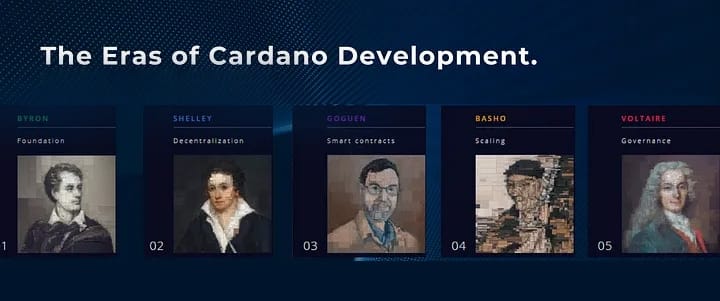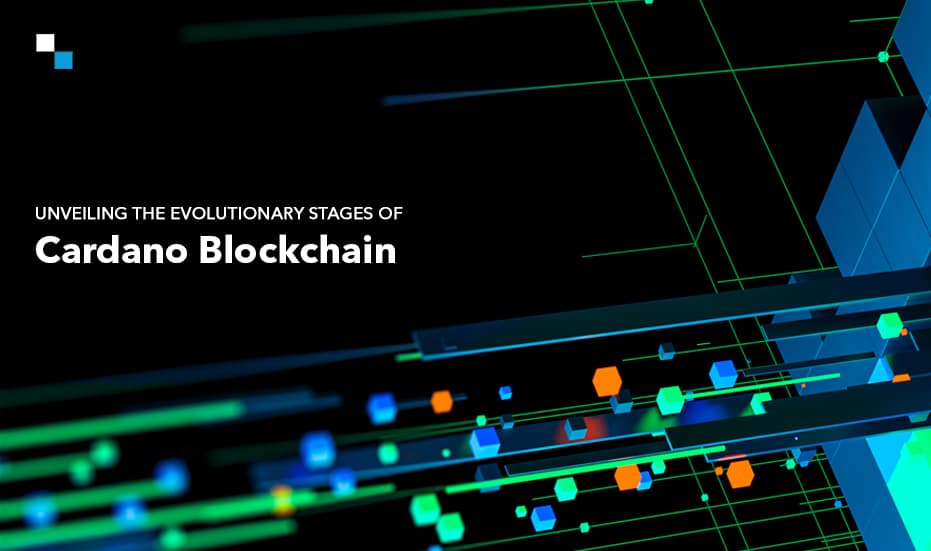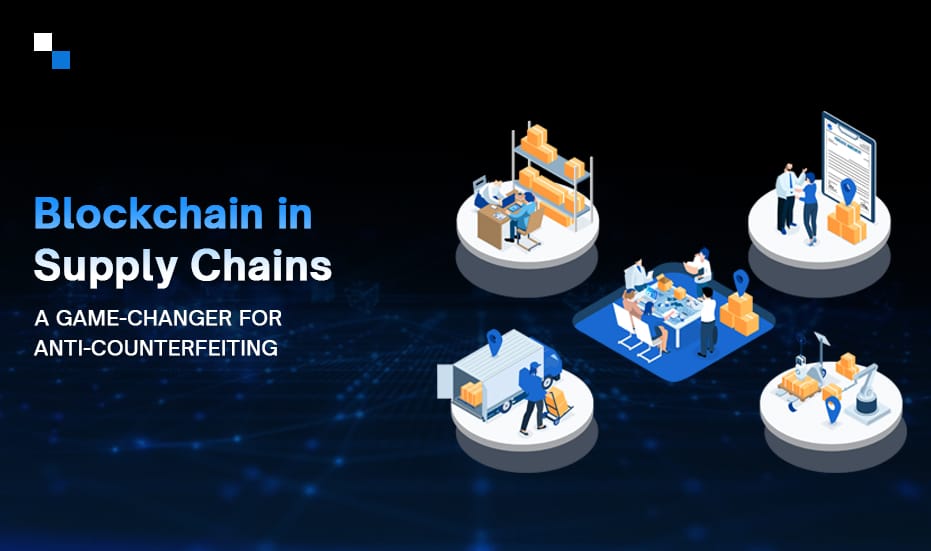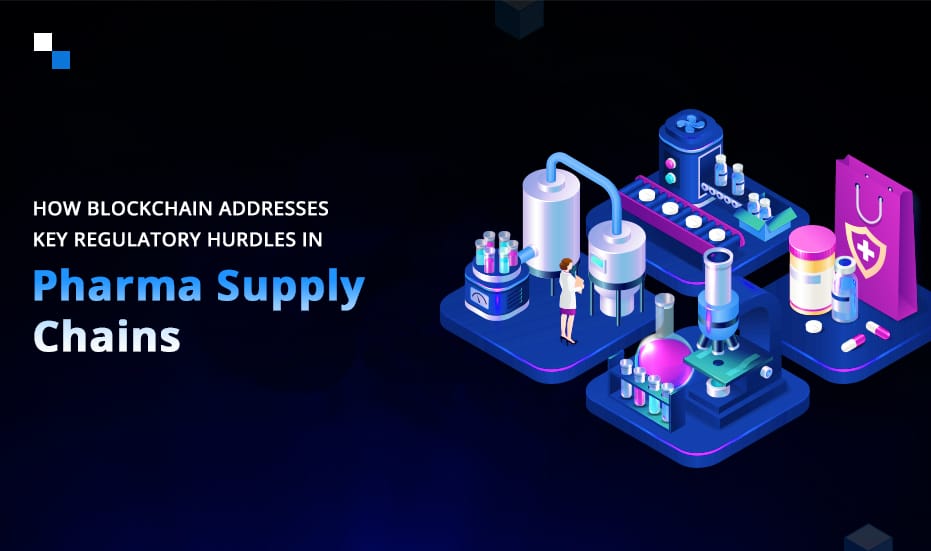Apart from Ethereum and Bitcoin, there is also a new Blockchain in town launched in 2017, Cardano. It is one of the top layer 1 blockchains that mostly remain under the radar of businesses for its phenomenal capabilities of addressing the primary Blockchain network challenges, such as scalability, interoperability, and sustainability. Cardano blockchain development helps process transactions with a dedicated cryptocurrency called ADA. However, besides handling transactions, the real goal of this blockchain platform is to become the “Internet of Blockchains,” creating an ecosystem that enables seamless interchangeability between distinct blockchains.
This blog will explain the Cardano blockchain development and its roadmap organized into five eras.
What is Cardano?

Cardano (ADA) is a decentralized proof of stake (PoS) blockchain founded in 2015 by Charles Hoskinson and launched in 2017. It comes with a multi-asset ledger and verifiable smart contracts, making it an ideal choice for large-scale and mission-critical dApp development. The Cardano platform runs on the Ouroboros consensus protocol. It was the first proof of stake (PoS) protocol designed with the motive of reducing the expenditure required by proof of work (PoW) mining. It does this simply by eliminating the need for massive computing resources that PoW algorithms require. Leverage the potential of this secure and scalable blockchain network, trusting the expertise of the Cardano blockchain development company.
What is the Cardano Roadmap?
The Cardano roadmap is organized into five different eras – Byron, Shelley, Goguen, Basho, and Voltaire; unfolding the evolutionary stages of Cardano. Each era depicts a set of functionalities delivered across numerous code releases.
The following blog aims to share insights about the purpose, scope, and status of each era of the Cardano blockchain development roadmap.
Explore the Five Eras of Cardano Roadmap

1. Byron — Foundation
The first version of Cardano was introduced to the world in Sept 2017, and the Byron era began. ADA token (named after the revolutionary programmer Ada Lovelace) debuted in this era and allowed users to buy and sell cryptocurrency on a federated network running the Ouroboros consensus protocol.
During the Byron era, the Daedalus wallet, IOHK’s desktop wallet for ADA, and Yorio, a light wallet from IOHK’s sister company Emurgo were also introduced. The Byron era was about crucial technology development and advancement and building a strong community by getting more people involved in building a blockchain of the future.
2. Shelley — Decentralization
Unlike the Byron era that began when the mainnet was launched, the Shelly era is a period of growth and development of the Cardano blockchain network, designed for smoother and low-risk transition without service interruptions. The primary goal of the Shelly era was to transform Cardano into a truly decentralized network. This happened by allowing the majority of nodes to be run by network participants to make Cardano more decentralized, robust, and secure.
The Shelly era also saw the delivery of a delegation and incentives scheme. It’s a rewarding system to encourage more users to participate in the Cardano ecosystem. This scheme has somehow worked well as presently ADA worth over $22 billion remains staked in different pools.

Additionally, over 3000 stake pools are currently operating the Cardano, making this blockchain platform 50-100 times more decentralized than other large blockchain networks. The Shelly era has made the Cardano blockchain development network useful and rewarding.
3. Goguen — Smart Contracts
The smart contracts and dApps concepts were introduced in the Goguen era. This era focuses on building Plutus, a purpose-built smart contract development language and execution platform. This advanced platform allows developers to build and execute functional smart contracts on Cardano.
The Goguen era also helped make Cardano blockchain development accessible to wider audiences through Marlowe, which allows financial and business experts having no technical knowledge to create smart contracts with complete ease. Marlowe is a high-level, domain-specific language (DSL) for financial contracts that are developed on Plutus. Marlowe is also equipped with Marlowe Playground, an easy-to-use application development platform that allows individuals with no deep programming skills to build financial smart contracts. Plutus and Marlowe opened up new possibilities for developing enterprise-level, mission-critical, decentralized smart contract applications, and even more incredible things to come during the Basho and Voltaire eras.
4. Basho — Scaling
The Basho era represents the advancement of the Cardano network in terms of scalability and interoperability of the network. This era fuels growth and increases the adoption of Cardano for applications with high transaction volume.
The core development of the Basho era is the introduction of sidechains that act as a sharding mechanism as it offloads work from the main chain onto a sidechain that further expands the network’s capabilities. Sidechains can also be utilized for testing new features without compromising the blockchain’s security.
The Basho era experienced the advancement of Cardano blockchain development, making it one of the most high-performance, powerful, resilient, and flexible blockchain platforms in the industry. This era helps build a network infrastructure that can be further scaled sustainably and securely.
5. Voltaire — Governance
The Voltaire era is the final piece of the Cardano blockchain development roadmap that builds a Cardano network, a self-sustaining system. This era will introduce voting and treasury systems, enabling users to share protocol parameter updates & improvement proposals and fund the suggested developments to influence the future development of the network.
Once a vote and a treasury mechanism are in place, this phase will make the Cardano truly decentralized, working independently of IOHK’s research and engineering teams. Not only this, but the community will also be in charge of Cardano’s future. They will be able to do everything needed to expand and evolve the network.

The Bottom Line
In conclusion, the various eras of the Cardano blockchain development roadmap offer a fascinating journey through the evolution of this innovative blockchain. Each phase represents a significant stride towards achieving Cardano’s vision of a secure, scalable, and decentralized blockchain ecosystem. As we anticipate the upcoming eras and their potential advancements, it’s clear that Cardano continues to push the boundaries of what is possible in the blockchain space.
Antier, a leading Cardano blockchain development company, is committed to shaping the future of decentralized finance and blockchain technology by building innovative solutions. If you want to experience the power of the Cardano blockchain, connect with Antier’s top blockchain consultants.





